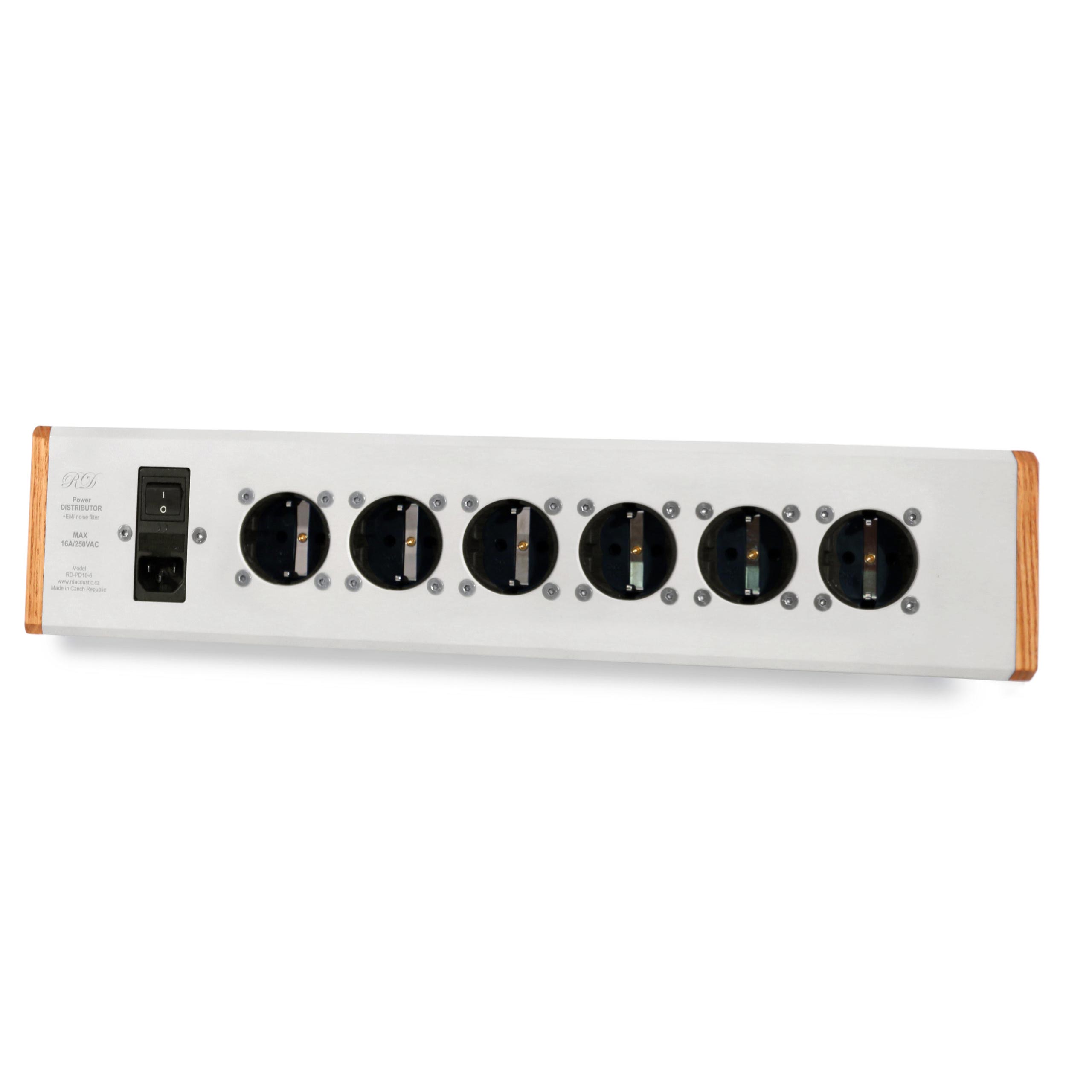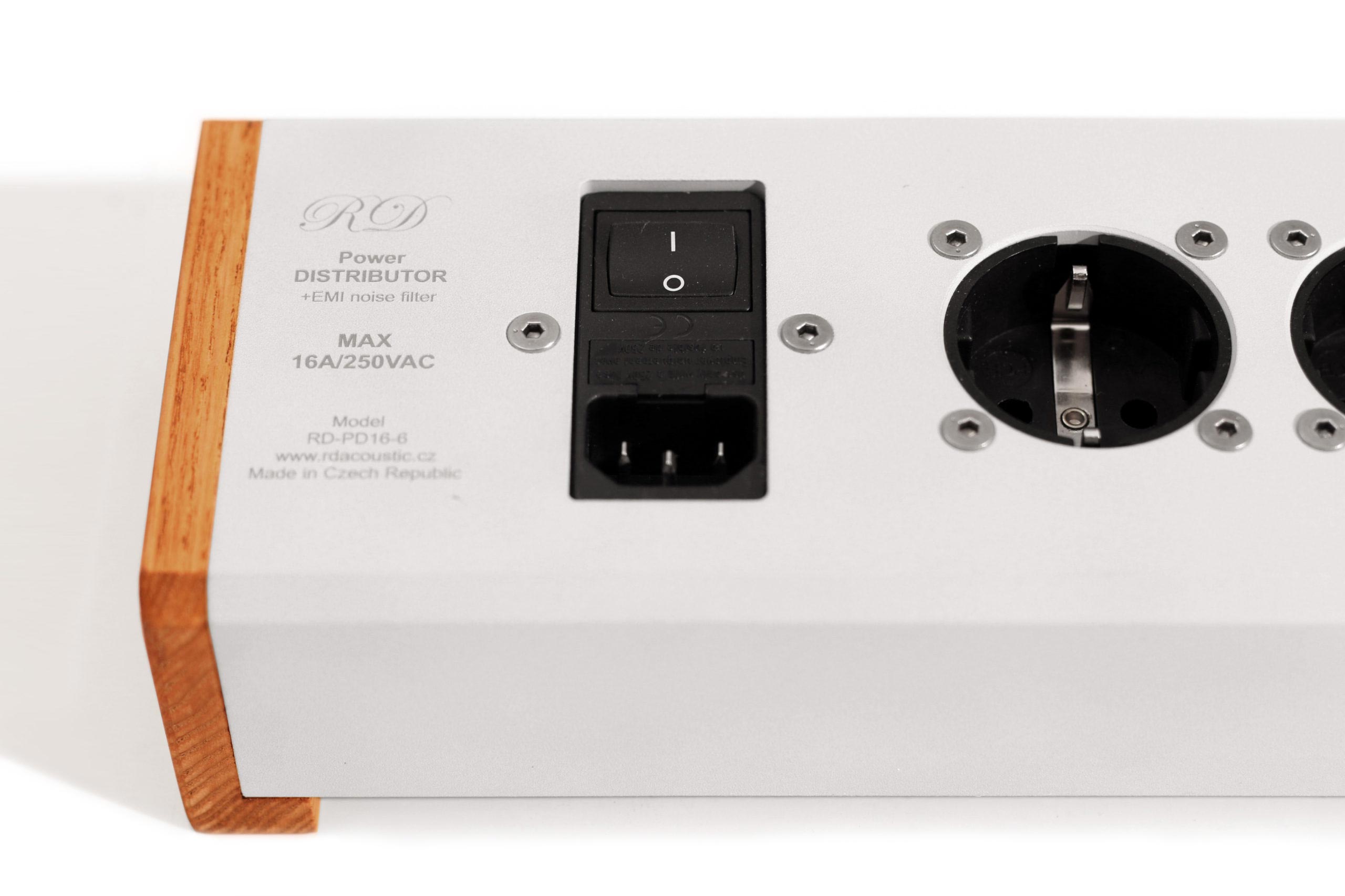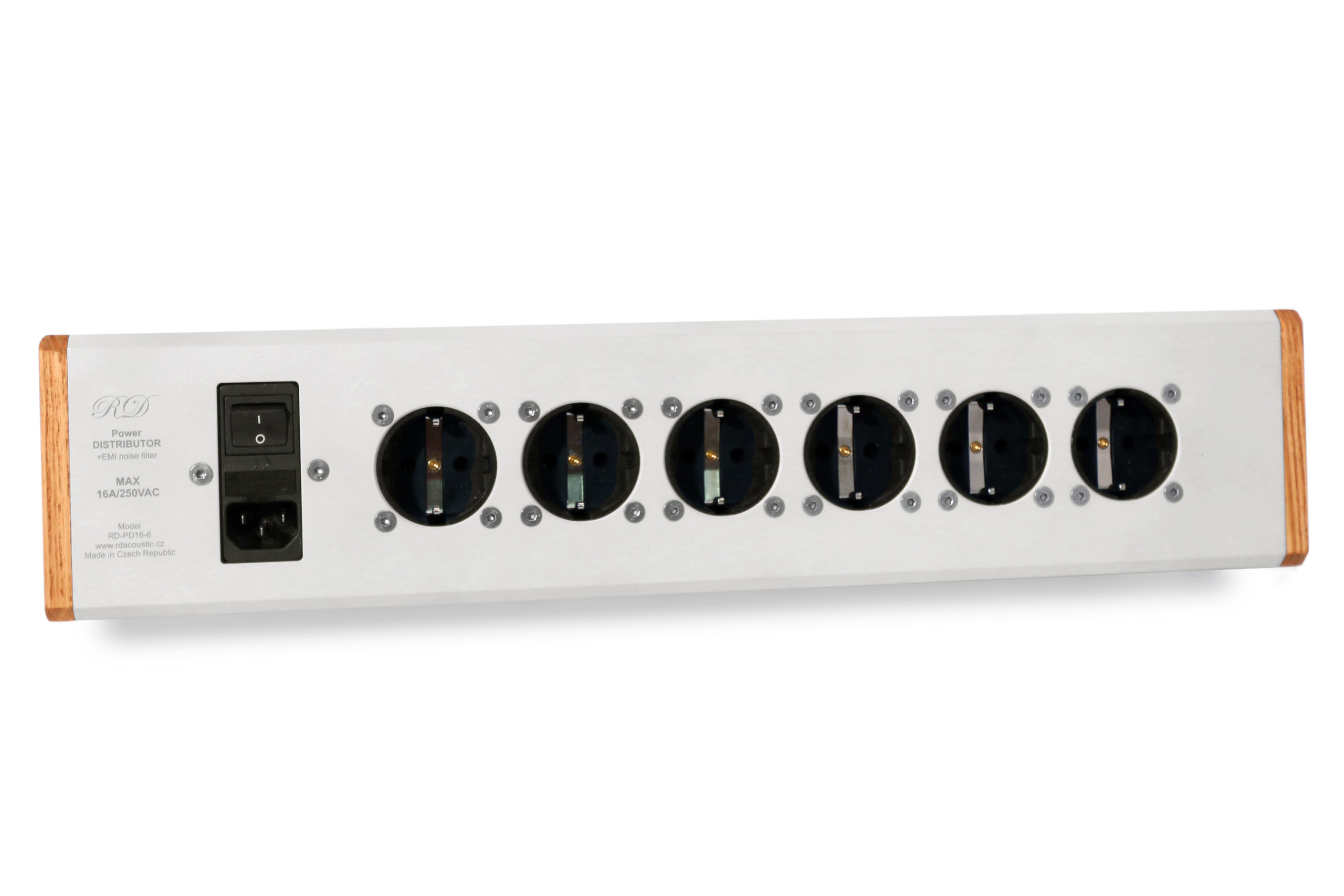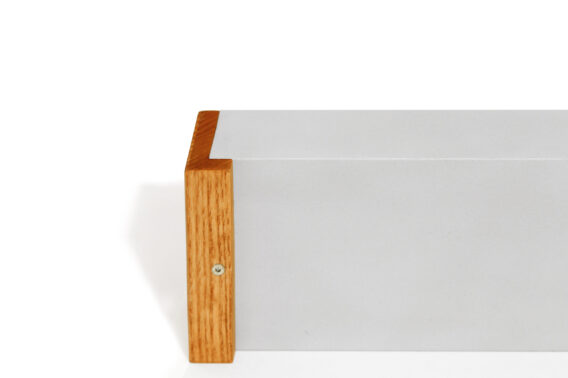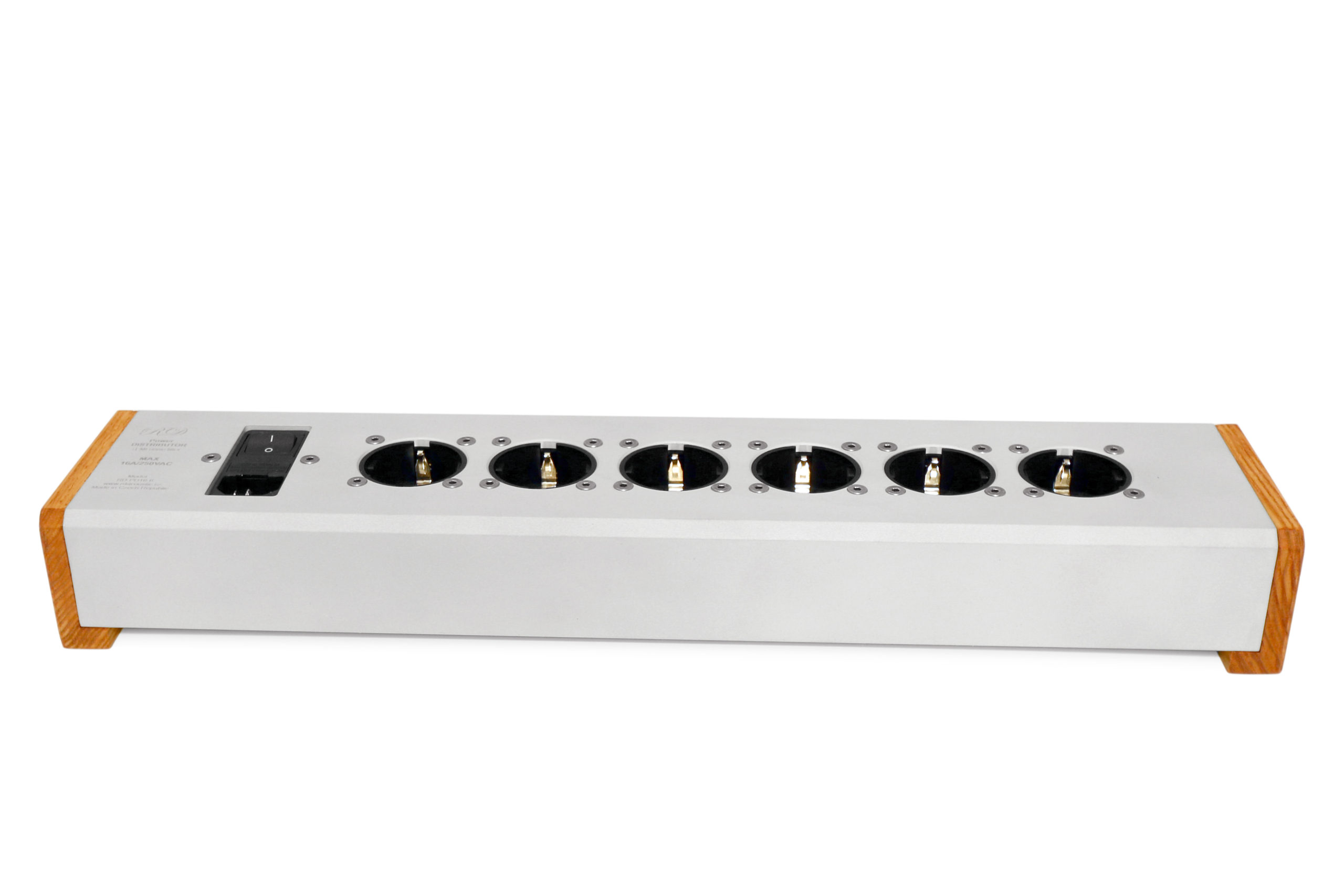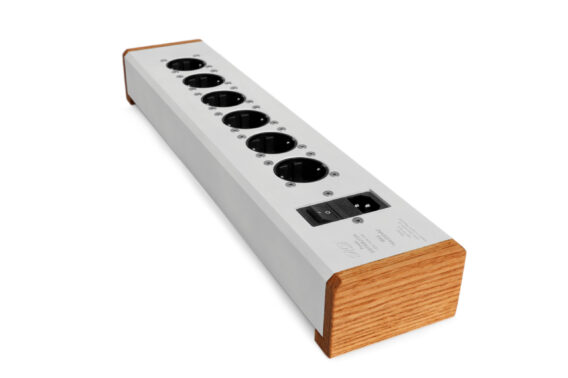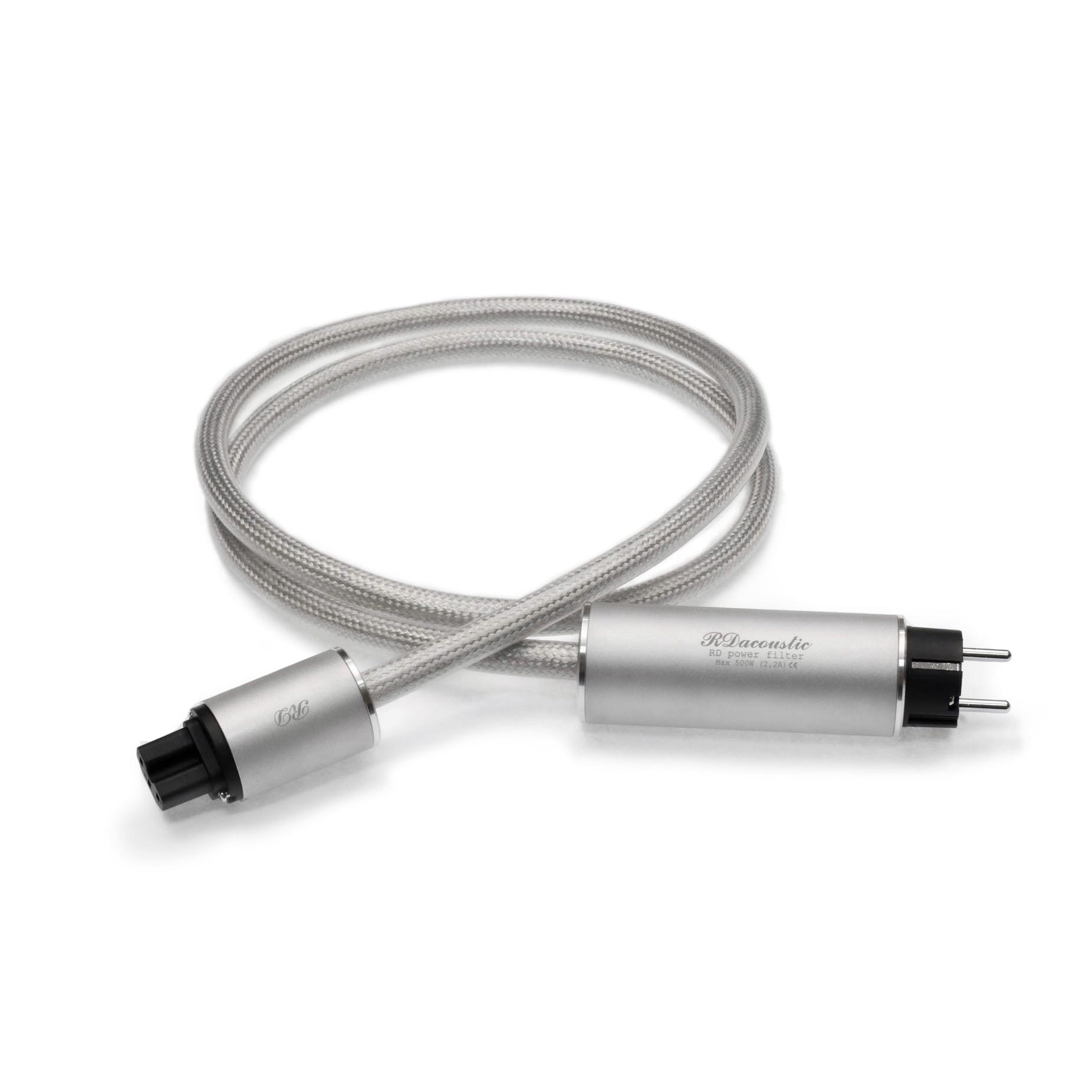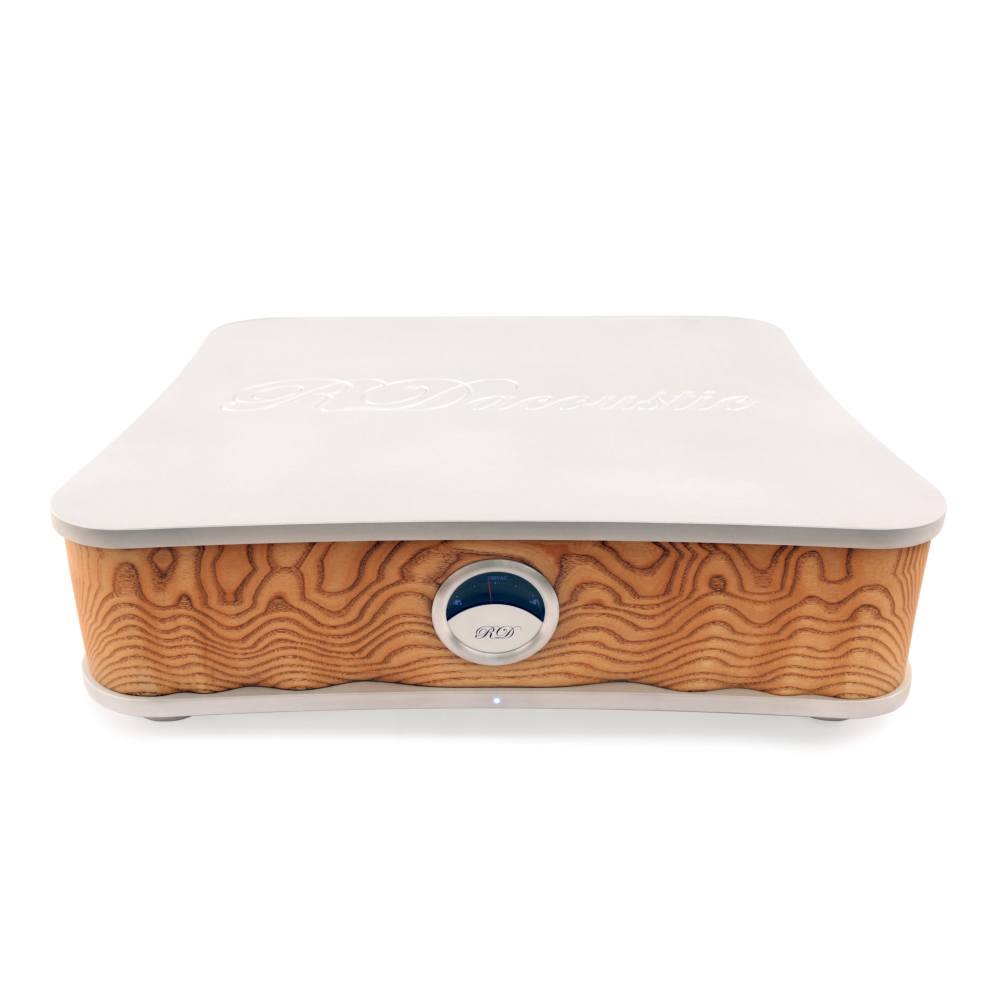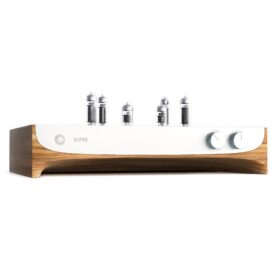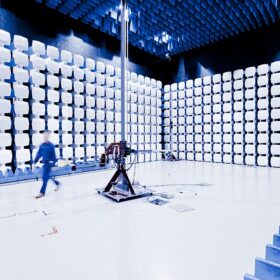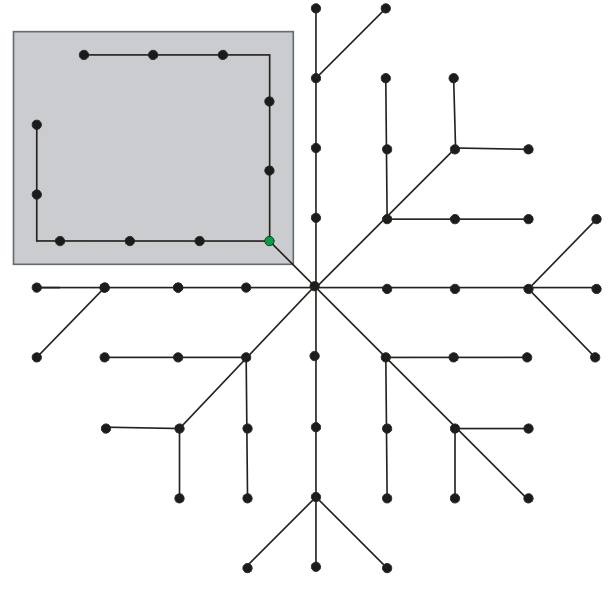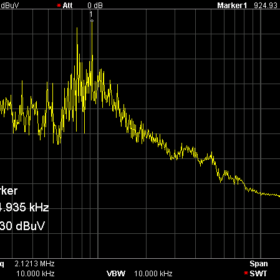Power Distributor RD-PD16-6
Is a power distributor designed to power audio components. Its single-stage EMI filter adequately reduces the today prominent symmetrical interference coming from the power grid. Precise and detail-oriented workmanship, just as the design that combines aluminium and wood, place this distributor amongst the rest of the pieces in our portfolio.
A robust solution not only for audio systems.
Power Distributor RD-PD16-6
Parameters
| Max. total current: | 16 A |
| Max. input voltage: | 250 VAC |
| Maximum continually transmitted power: | 3600 W |
| Power without load: | 0.1 W |
| HF filtration: | 9 kHz to 1 MHz (-3 dB to -12 dB) |
| Fuse: | 16 A/T |
| Size: | 470 x 60 x 100 mm |
| Weight: | 1.9 kg |
| Environment temperature: | -10 to +50°C |
| Sockets type: | 6x European Schuko |
| Protection: | IP20 |
| Inner circuit: | Copper 2,5 mm² |
- Symmetrical interference filtering
- Six power sockets
- Main switch
Specifics
|
The single-stage passive EMI filter with a current compensated choke coil effectively suppresses symmetrical interference. This type of interference is very common in the power grid, increasing the level of background noise. Higher background noise means less distance of useful signal from said noise and therefore degradation of the overall quality of the entire audio system. The unbelievable sensitivity of the human ear, one to a billion, makes each detail important for proper enjoyment of music. |
|
This power distributor can be connected via a power cord of your own choice. It is possible to use our RD Power Filter, which integrates effective surge protection and EMI filtration. RD Power Filter is limited to 500 W on input, which is however more than enough for most audio systems. The efficiency of both of the filters then adds up. |
Accessories
Is a unique power filter combined with surge protection. This article from RDacoustic’s workshop effectively protects your audio appliances and other devices against overvoltage (lightning strikes and other causes) and at the same time cleans the power supply from unwanted electromagnetic interference, resulting in an improved sound quality of your audio devices.
Protect your devices the pure way.
Is a complex power filter with integrated surge protection. The filter increases the distance of background noise from useful signal, making the sound more crystal-like, with more details. Filter omnipresent high frequency interference effectively and supply your sensitive audio components with clear power!
Audio hifi ultra linear tube amplifier DIMD PP10 offers more than meets the eye.
It is constructed without the use of any printed circuit boards. All the components are hand wired onto the tube sockets to achieve the shortest signal path possible. Excellent spatiality and detail reproduction.
FAQ
Why filter the power supply?
Electromagnetic interference is all around us. Be it in a large metropolis or a small village, we intercept mobile signals of multiple providers, we tune in radio or television. Electromagnetic waves are transmitted by air and by the power grid. Transmitters operate in large frequency range from 1.5 MHz to hundreds of GHz. While over the grid, lower frequencies are better transmitted, we can still find high frequencies even here.
Today, almost all electrical devices use switched-mode power supplies. These and many more parts pollute the electrical distribution network. You share the power grid with your neighbours. Interference due to switched power supplies (take into account heat pumps, solar and wind power station converters, chargers, TVs, computers, Wi-Fi and other appliances like hairdryers or microwaves) is transmitted through the power grid to your sensitive audio components. All appliances should comply with the limits of interference they can emit, as defined in the EN-61000-6-3 standard. However, interference adds up from all the devices connected to the grid.
Sensitivity of the Human Ear
Although the human ear cannot beat that of a bat, dog or a cat, it is nevertheless very sensitive. We hear the range of 20 to 20000 Hz, with the sensitivity of about 0 dB (threshold of hearing) to 130 dB (threshold of pain). dB is a logarithmic unit. The finest audible detail has an acoustic intensity of 10−12, or one billionth, of W/m2 (watt per square meter), in comparison to a loud 120 dB disco, which has the acoustic intensity of 1 W/m2. Billion is the range we are able to hear. If we put a million coins onto a pile and had a million of these piles and put them all onto one pile, if we then added or took away just one coin, it would be the equivalent of the difference that the human ear can distinguish. Even a small increase in interference, amplified by an amplifier together with the useful signal, will be recognisable.
Why should we care about high frequencies?
Human hearing is limited to 20 kHz, we cannot hear higher. At young age, we hear higher frequencies, as we become older, the audible frequency decreases. We cannot hear 1 MHz, for example, but we can and do hear low frequencies modulated on the high ones. Radio uses this principle, which is called amplitude modulation: We hear low frequencies modulated on high frequencies transmitted through air—AM broadcasting. Just like through air, high frequencies are transmitted by power lines.
Background Noise
Hum, buzz, noise is omnipresent. In electrical engineering, it designates a signal corresponding to acoustic noise or visual noise (large grain in digital photos or videos). EMI Neutralizer significantly reduces electromagnetic interference, or noise, coming from the grid. The tiniest details in music, otherwise hidden in the noise area, can then come forward.
From our blog
What is “electromagnetic compatibility”? Does it serve any purpose nowadays, or is it an anachronism? Why most consumer electronics cannot withstand a lightning strike
How and why does the grounding potential influence our audio system and how to improve it.
Would you like to know what interference occurs in the power grid? Why deal with filtration? To illustrate the issue, I made measurements at four different places. For comparison, I used a common EURO cable and RD Power Filter.
Newsletter
We'll let you know about our participation in audio shows, new reviews and products, new places to listen to your speakers, or new posts on our blog. We won't spam you.
